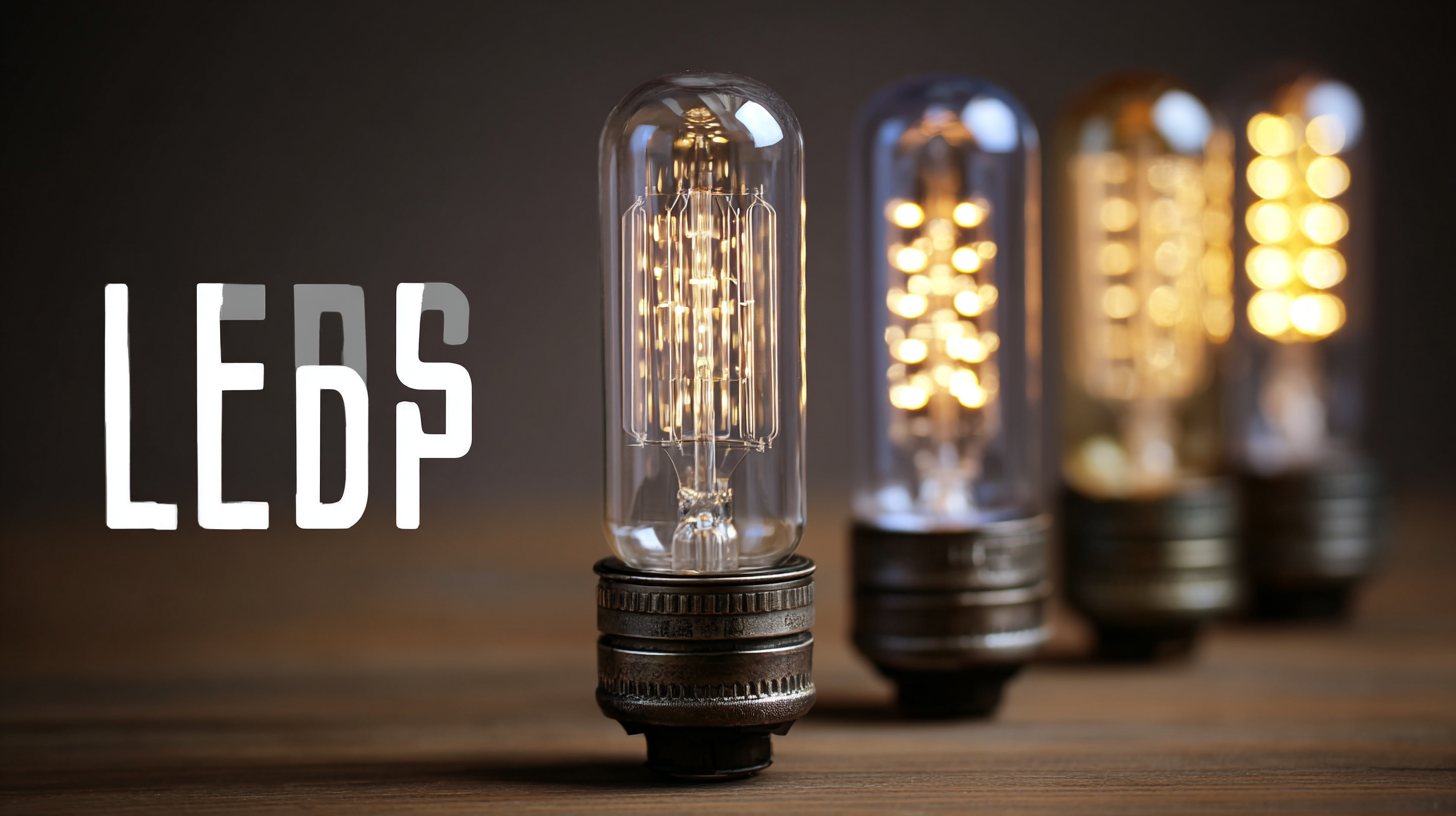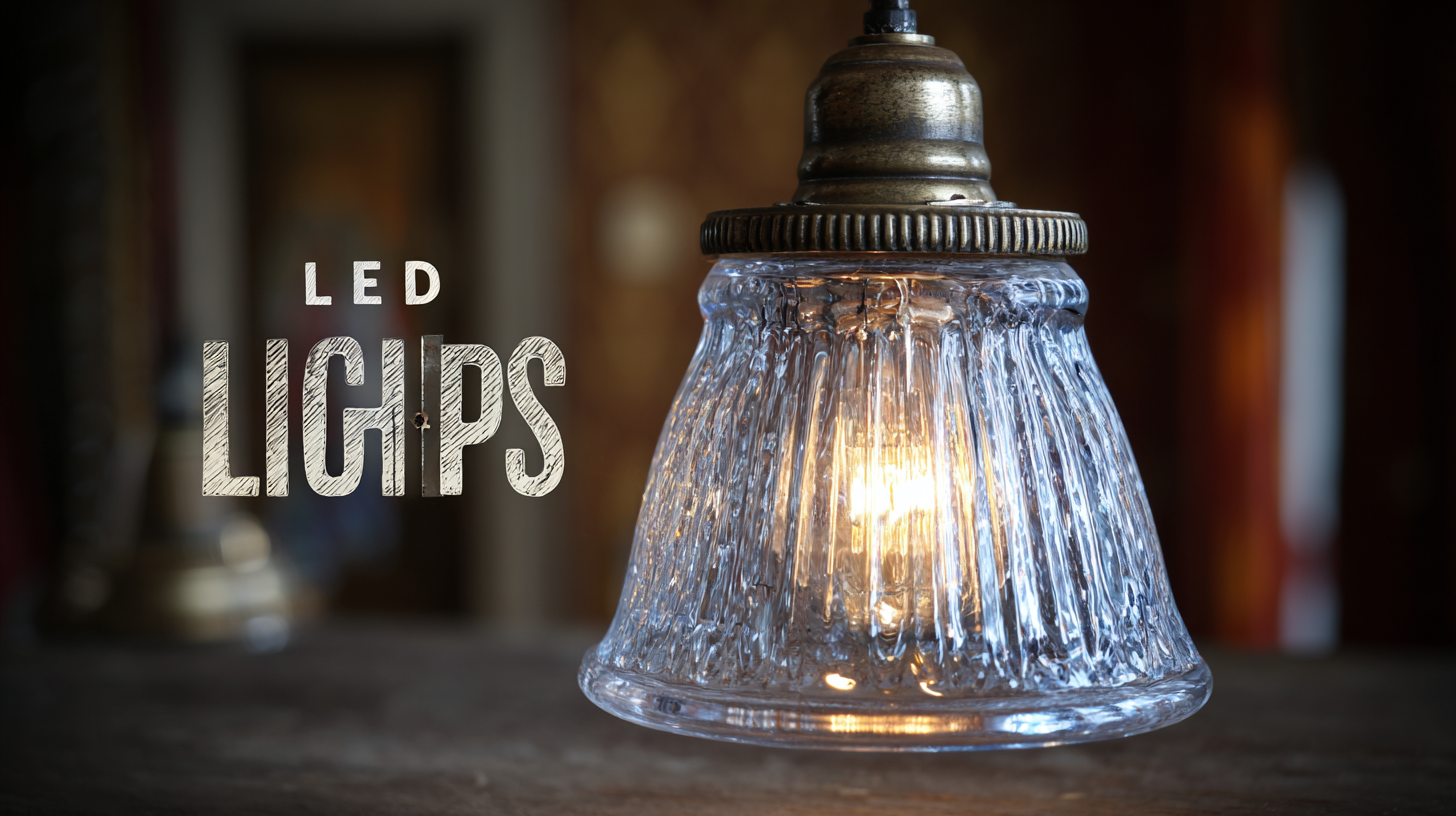Unlocking Quality: A Global Buyer’s Guide to Sourcing the Best LED Lights Lamps
In recent years, the lighting industry has undergone a significant transformation, with LED lights lamps emerging as a preferred choice for both residential and commercial applications. According to a report by Fortune Business Insights, the global LED lighting market is projected to reach $150.0 billion by 2026, growing at a CAGR of 14.4%. This surge in popularity can be attributed to the numerous advantages offered by LED technology, including energy efficiency, longer lifespan, and reduced environmental impact compared to traditional lighting solutions. As buyers navigate the myriad of options available in the market, understanding the various alternatives is crucial in sourcing the best LED lights lamps that meet specific needs. This guide will explore alternative types of LED lights, providing insights into their applications, benefits, and key factors to consider when making informed purchasing decisions.

Understanding Global Market Trends for LED Lighting Solutions
As global demand for energy-efficient lighting solutions surges, the LED lighting market is witnessing rapid transformation. Understanding the various trends shaping the industry is crucial for buyers seeking to make informed decisions. From advancements in technology to changing consumer preferences, buyers must stay abreast of the latest developments to source the best LED lighting products.

One notable trend is the increasing focus on smart lighting technologies. With the rise of the Internet of Things (IoT), consumers are increasingly interested in lighting systems that offer connectivity and automation. This shift not only enhances convenience but also promotes energy conservation. Additionally, sustainability has become a pivotal consideration, with an emphasis on eco-friendly manufacturing processes and materials. Buyers should prioritize suppliers who adhere to stringent environmental standards, ensuring that their choices contribute positively to the planet.
Regional variations also play a significant role in shaping market trends. For instance, North America and Europe are leading the charge in adopting LED solutions, while emerging markets in Asia-Pacific are catching up rapidly. By understanding these dynamics, buyers can tailor their sourcing strategies to meet the demands of their specific markets, ultimately unlocking quality and value in their procurement processes.
Key Specifications to Consider When Sourcing LED Lights
When sourcing LED lights, it's essential to understand the key specifications that can affect performance and longevity. First and foremost, consider the lumen output, which indicates the brightness of the LED. A higher lumen count means a brighter light, but it's equally important to assess the energy efficiency. Look for lights with a high lumen-per-watt ratio, as this ensures you get more brightness for less energy consumption, leading to cost savings on your electricity bill.
Another critical specification is the color temperature, measured in Kelvin (K). Depending on your needs, you might prefer warm white light (around 2700K) for comfort in living spaces or cool white light (between 4000K and 5000K) for productivity in work environments. Additionally, the LED's color rendering index (CRI) is vital to evaluate, as it measures how accurately the light displays colors compared to natural light. A CRI of 90 or above is generally preferred for spaces where true color representation is important. By paying close attention to these specifications, you can ensure that you source the best LED lights for your specific applications.
Unlocking Quality: A Global Buyer’s Guide to Sourcing the Best LED Lights Lamps - Key Specifications to Consider When Sourcing LED Lights
| Specification | Description | Recommended Value |
|---|---|---|
| Wattage | Power consumption of the LED light | 5W - 15W |
| Lumens | Brightness level emitted by the lamp | 800 - 1600 Lumens |
| Color Temperature | Warmth or coolness of the light | 2700K - 5000K |
| Rated Life | Expected lifespan of the LED | 15,000 - 50,000 hours |
| Dimmability | Ability to adjust brightness | Available (check compatibility) |
| Beam Angle | Spread of light from the source | 120° - 180° |
| Energy Efficiency | Efficacy of light output relative to energy consumed | 80+ Lumens/Watt |
| Certification | Standards that the product meets | UL, CE, RoHS |
Evaluating China’s Manufacturing Standards and Certifications
When evaluating China’s manufacturing standards and certifications for LED lights and lamps, it’s essential to understand the evolving landscape of regulatory frameworks and compliance certifications. Recent developments include the China Quality Certification Center's introduction of new voluntary certification schemes, aimed at enhancing product quality and performance across various sectors. This initiative underscores the growing emphasis on rigorous standards in the manufacturing industry, an aspect particularly important for international buyers seeking reliability in their sourcing decisions.
Tip: Always verify whether the products have certificates such as the SELO license, mandatory for specific categories like pressure vessels and hydrogen products, as these certifications indicate compliance with stringent Chinese market regulations.
Moreover, the easing of controls over cross-border data transfers is a significant step towards greater transparency in manufacturing practices. By facilitating smoother data flow, suppliers can provide better documentation and traceability of their manufacturing processes and quality standards. This is especially relevant for buyers focused on sustainability and ethical sourcing.
Tip: Review the latest draft standards related to cross-border personal information transfers, as these regulations not only affect data management but can also influence the overall sourcing strategy and compliance of manufacturers you choose to work with.
Cost-Effectiveness in Sourcing: Comparing LED Suppliers Worldwide
When sourcing LED lights, cost-effectiveness is often a key consideration for buyers. With numerous suppliers available globally, understanding how to compare options can lead to significant savings. First, assess the total cost of ownership, which includes not just the initial purchase price but also long-term factors such as energy efficiency and maintenance requirements. Some manufacturers offer premium products with longer lifespans, which might command a higher upfront price but can ultimately lead to lower operational costs.
Next, consider the variations in supplier pricing by region. Some regions may have lower manufacturing costs that translate into better prices for buyers. Additionally, exploring local suppliers can reduce shipping costs and lead times, making the overall sourcing process more efficient. However, it’s crucial to evaluate the quality of the products along with the cost. Quality assurance and compliance with international standards should be prioritized to ensure that the products meet the needs and expectations of your application. By balancing cost with quality, buyers can effectively unlock the benefits of sourcing the best LED lights worldwide.
Global Comparison of LED Light Cost-Effectiveness
Innovative Technologies Revolutionizing the LED Lighting Industry
Innovative technologies are transforming the LED lighting industry, driving significant improvements in efficiency, durability, and versatility. One of the most exciting advancements is the integration of smart technology into LED lighting systems. With the rise of IoT (Internet of Things), LED lights can now be controlled remotely, allowing users to adjust brightness, color, and energy consumption from their smartphones or smart home devices. This level of control not only enhances user experience but also leads to substantial energy savings and reduced operational costs.
Another notable innovation is the development of advanced materials and manufacturing techniques. For instance, new heat-dissipation technologies are improving the longevity of LED lamps, making them more reliable for both residential and commercial applications. Additionally, the use of biodegradable materials in LED production is promoting sustainability in the lighting industry, aligning with global efforts to reduce environmental impact. As these innovations continue to evolve, they pave the way for smarter, more efficient lighting solutions that cater to an increasingly eco-conscious market.

